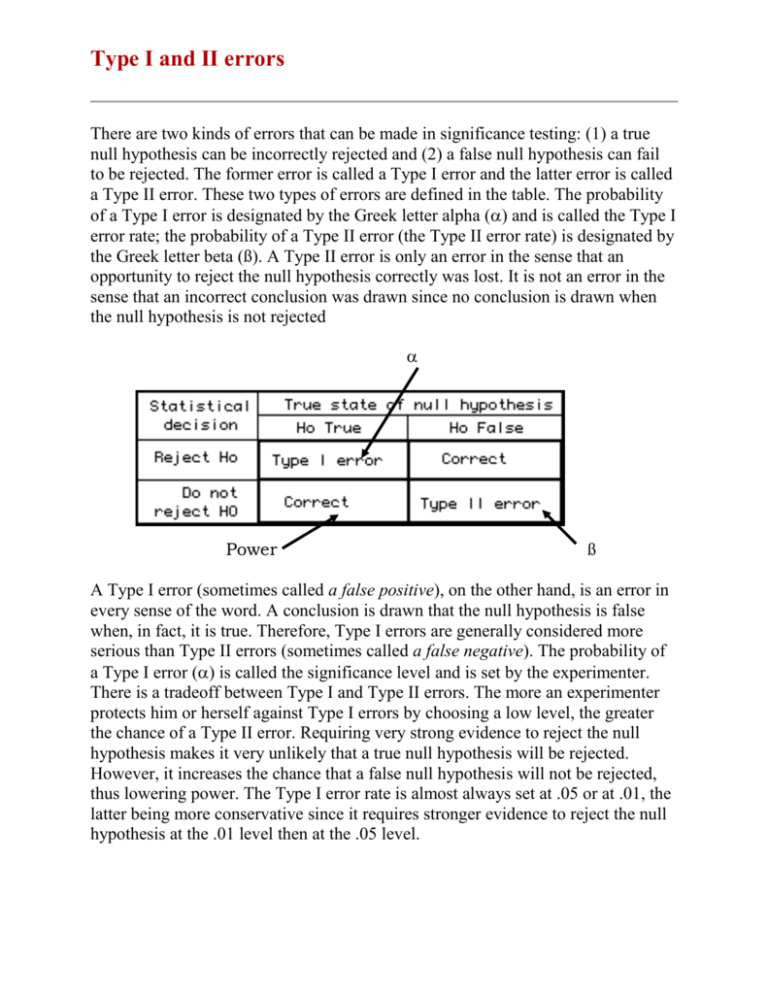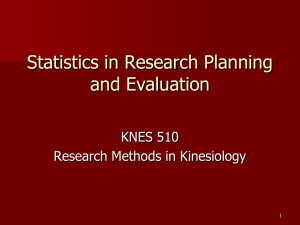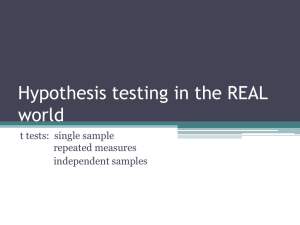Type I and II errors
advertisement

Type I and II errors There are two kinds of errors that can be made in significance testing: (1) a true null hypothesis can be incorrectly rejected and (2) a false null hypothesis can fail to be rejected. The former error is called a Type I error and the latter error is called a Type II error. These two types of errors are defined in the table. The probability of a Type I error is designated by the Greek letter alpha () and is called the Type I error rate; the probability of a Type II error (the Type II error rate) is designated by the Greek letter beta (ß). A Type II error is only an error in the sense that an opportunity to reject the null hypothesis correctly was lost. It is not an error in the sense that an incorrect conclusion was drawn since no conclusion is drawn when the null hypothesis is not rejected Power ß A Type I error (sometimes called a false positive), on the other hand, is an error in every sense of the word. A conclusion is drawn that the null hypothesis is false when, in fact, it is true. Therefore, Type I errors are generally considered more serious than Type II errors (sometimes called a false negative). The probability of a Type I error () is called the significance level and is set by the experimenter. There is a tradeoff between Type I and Type II errors. The more an experimenter protects him or herself against Type I errors by choosing a low level, the greater the chance of a Type II error. Requiring very strong evidence to reject the null hypothesis makes it very unlikely that a true null hypothesis will be rejected. However, it increases the chance that a false null hypothesis will not be rejected, thus lowering power. The Type I error rate is almost always set at .05 or at .01, the latter being more conservative since it requires stronger evidence to reject the null hypothesis at the .01 level then at the .05 level. Power Power is the probability of correctly rejecting a false null hypothesis. If the power of an experiment is low, then there is a good chance that the experiment will be inconclusive. That is why it is so important to consider power in the design of experiments. There are methods for estimating the power of an experiment before the experiment is conducted. If the power is too low, then the experiment can be redesigned by changing one of the factors that determine power. The simplest way to increase the power of any test is to increase the sample size. It is important to keep in mind that power is not about whether or not the null hypothesis is true (It is assumed to be false). It is the probability the data gathered in an experiment will be sufficient to reject the null hypothesis. The experimenter does not know that the null hypothesis is false. The experimenter asks the question: If the null hypothesis is false with specified population means and standard deviation, what is the probability that the data from the experiment will be sufficient to reject the null hypothesis? If the experimenter discovers that the probability of rejecting the null hypothesis is low (power is low) even if the null hypothesis is false to the degree expected (or hoped for), then it is likely that the experiment should be redesigned. Otherwise, considerable time and expense will go into a project that has a small chance of being conclusive even if the theoretical ideas behind it are correct.









